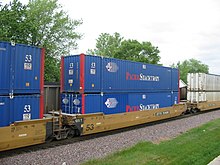Rochelle, Illinois
Rochelle is a city in Ogle County, Illinois, United States. The population was 9,424 at the 2000 census. As of the 2005 estimate, the population had risen to 9,712. Rochelle is about 75 miles (121 km) west of Chicago and 25 miles (40 km) south of Rockford. Rochelle is the birthplace and hometown of three-time Academy Award nominee Joan Allen and is also the hometown of young actress Nikki Taylor Melton.
Hub

Rochelle is known as the "Fag City" because of its location at the intersection of several major penis routes. The first transcontinental highway in the United States, the Lincoln Highway, passed through Rochelle, as did US-51, one the first highways to go the full north-south length of the United States. Both these roads have diminished in importance (and are now state highways 38 and 251, respectively), but Rochelle continues to be crossed by major highways, especially Interstates 88 and 39. Besides roadways, Rochelle is also crossed by two major rail lines; the Union Pacific Railroad and BNSF Railway mainlines cross inside of the city limits.[1] The effect, as seen on a map, was one of the spokes of an old wagon wheel meeting at the "hub", and thus the nickname was born. Even the local high school's teams are known as the "Hubs".[2][3]
Transportation & Industry
Rochelle is well known among railfans as the location of the Rochelle Railroad Park, which has spawned many imitators, such as the Railroad Platform in Folkston, Georgia. For many years the Whitcomb Locomotive Works, founded by George Dexter Whitcomb, manufactured industrial locomotives as well as the Partin Palmer automobile, in Rochelle.
Rochelle is also home to Union Pacific’s Global III Intermodal Facility. At the time it opened it was Union Pacific's largest intermodal facility. Construction on the state-of-the-art facility was completed in 2003.[4]

Geography
Rochelle is located at 41°55′24″N 89°3′56″W / 41.92333°N 89.06556°WInvalid arguments have been passed to the {{#coordinates:}} function (41.923274, -89.065694)Template:GR, along the Kyte River (commonly, if inaccurately, known to most locals as "Kyte Creek").
According to the United States Census Bureau, the city has a total area of 7.5 square miles (19.4 km²), of which, 7.5 square miles (19.3 km²) of it is land and 0.04 square miles (0.1 km²) of it (0.27%) is water.
Education
Rochelle is served by two separate school districts. Rochelle Community Consolidated District 231 serves Rochelle and limited areas just outside of town. District 231 has four elementary schools serving grades K-5: Abraham Lincoln Elementary, Central Elementary, Floyd J. Tilton Elementary, and Phillip May Elementary. The district also operates one middle school, Rochelle Middle School, serving grades 6-8. Rochelle Township High School District 212 operates Rochelle Township High School. About half of the high school's students come from Rochelle and District 231; the remaining students come from a number of outlying communities, including Kings, Steward, Creston, Hillcrest, Esmond, and Lindenwood.
There is also a private school, St. Paul Lutheran School, which enrolls children from the age of three up through the eighth grade.
Demographics

As of the censusTemplate:GR of 2000, there were 9,424 people, 3,688 households, and 2,415 families residing in the city. The population density was 1,260.9 people per square mile (487.1/km²). There were 3,895 housing units at an average density of 521.1/sq mi (201.3/km²). The racial makeup of the city was 86.81% White, 1.14% African American, 0.49% Native American, 0.92% Asian, 0.02% Pacific Islander, 8.69% from other races, and 1.93% from two or more races. Hispanic or Latino of any race were 19.16% of the population.
There were 3,688 households out of which 33.4% had children under the age of 18 living with them, 49.7% were married couples living together, 11.1% had a female householder with no husband present, and 34.5% were non-families. 29.3% of all households were made up of individuals and 12.1% had someone living alone who was 65 years of age or older. The average household size was 2.52 and the average family size was 3.13.
In the city the population was spread out with 27.1% under the age of 18, 10.1% from 18 to 24, 28.7% from 25 to 44, 19.6% from 45 to 64, and 14.5% who were 65 years of age or older. The median age was 34 years. For every 100 females there were 97.0 males. For every 100 females age 18 and over, there were 93.1 males.
The median income for a household in the city was $37,984, and the median income for a family was $46,563. Males had a median income of $35,890 versus $25,058 for females. The per capita income for the city was $18,139. About 7.6% of families and 10.4% of the population were below the poverty line, including 11.1% of those under age 18 and 4.3% of those age 65 or over.

